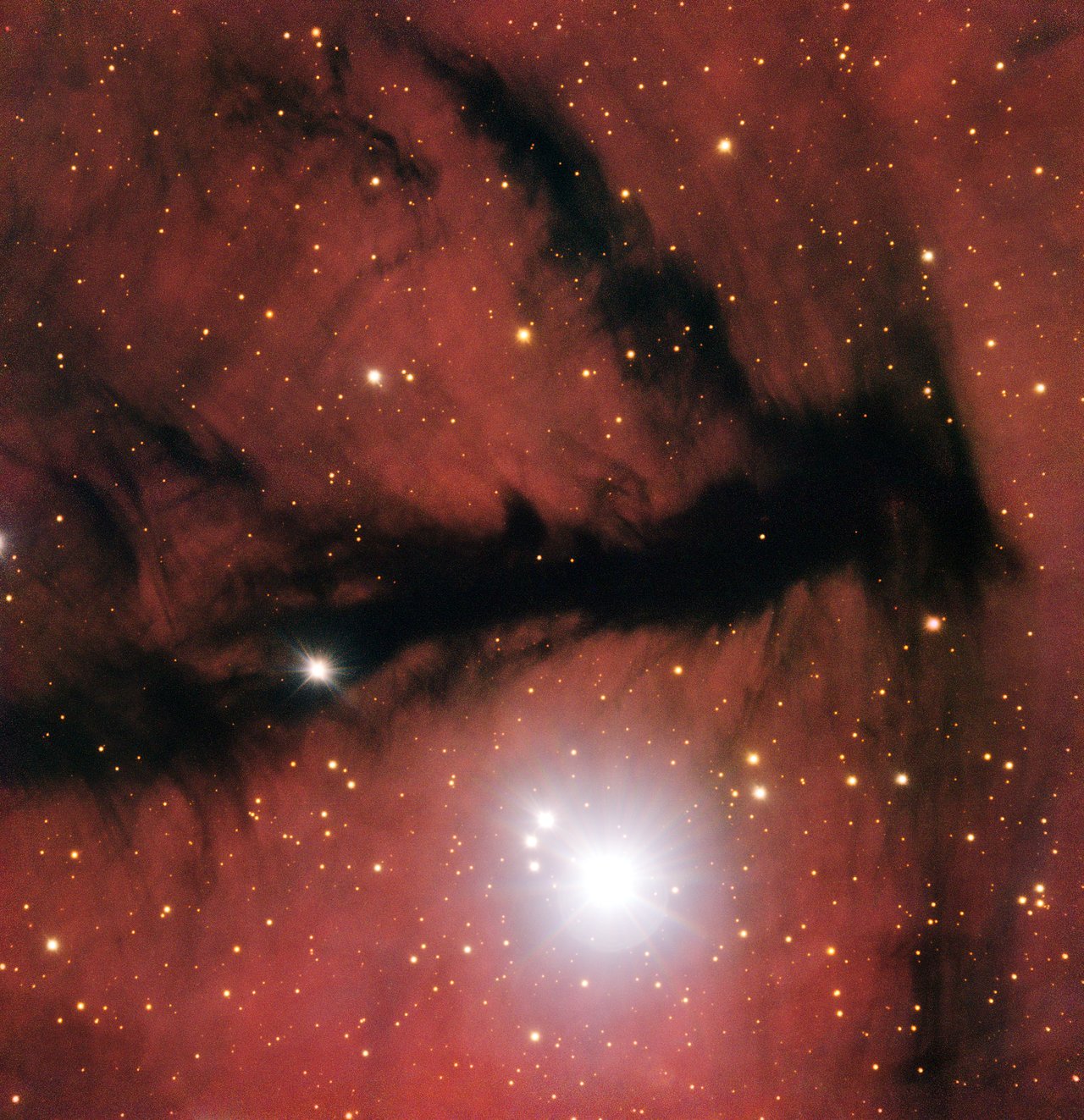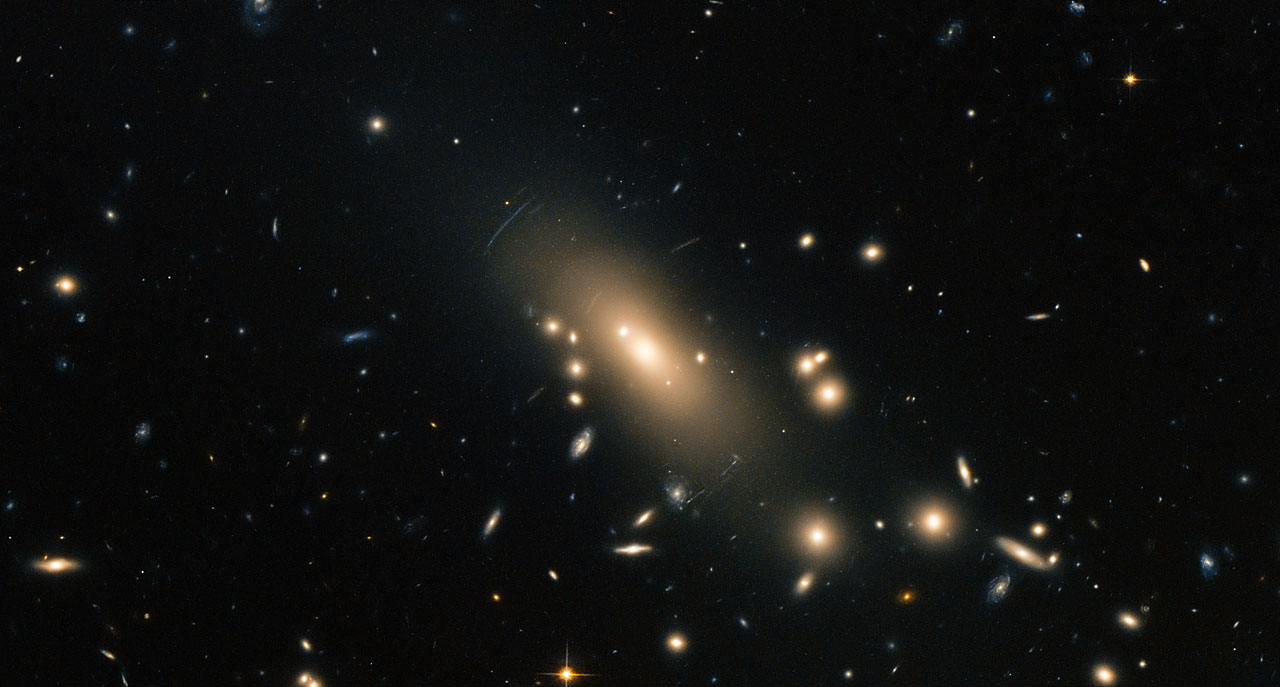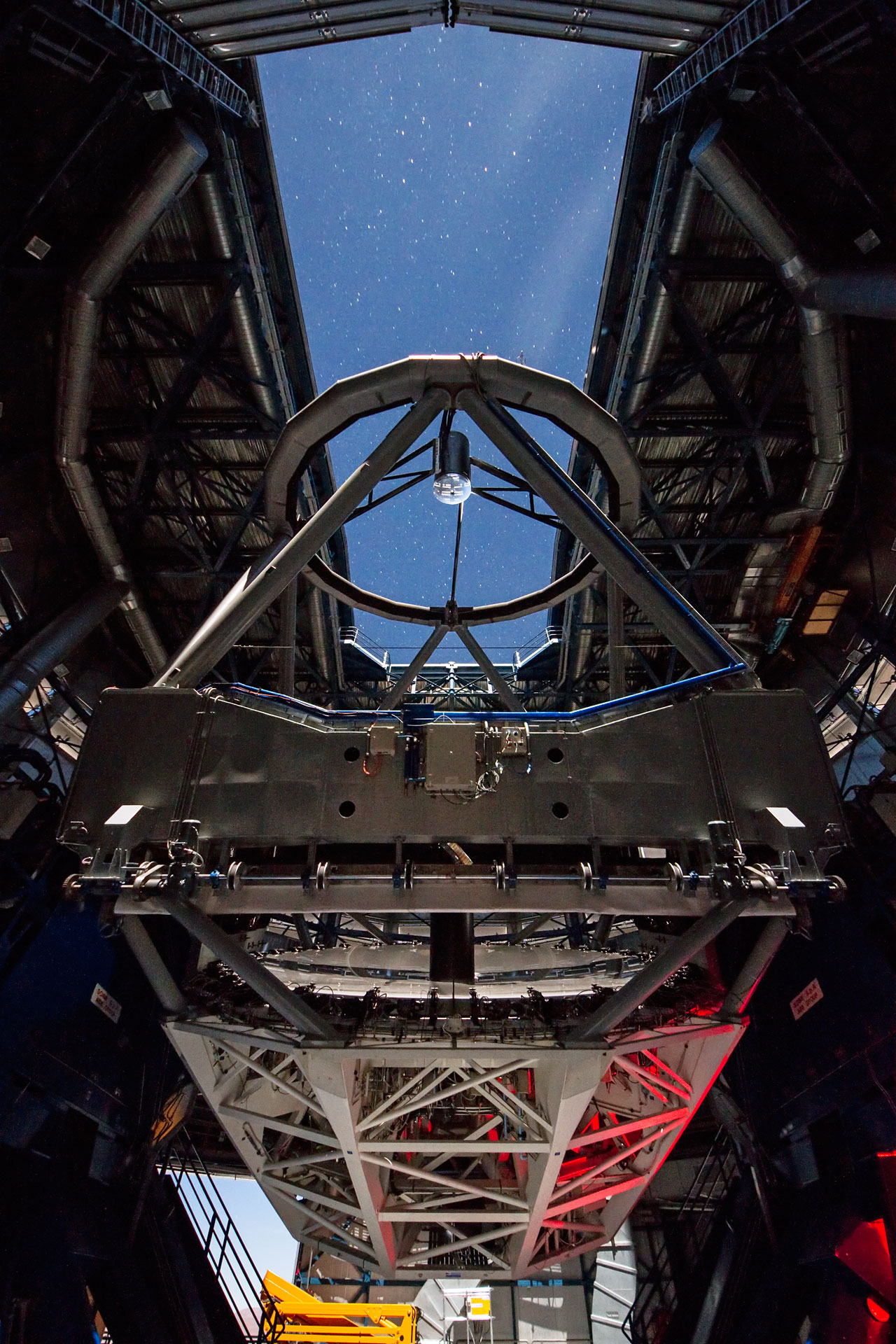Found Images: 2014 November
-
starsurfer
- Stellar Cartographer
- Posts: 5328
- Joined: Thu Mar 15, 2012 7:25 pm
Found Images: 2014 November
Have you seen a great image or video somewhere that you think would make a great APOD? Nominate it for APOD! Please post as much information here as you have about the image/video with a link to any source(s) for it you know of here, and the editors will take a look.
When posting the image itself, please do not post anything larger than a thumbnail here; please honor the copyright holder's copyright.
Please keep hotlinked images under 400K.
Thank you!
<< Previous discoveries
WR 134 nebula
http://www.noao.edu/image_gallery/html/im1249.html
Copyright: T.A. Rector (University of Alaska Anchorage) and H. Schweiker (WIYN and NOAO/AURA/NSF) Wolf Rayet nebulae are so pretty! While this is located in the northern celestial hemisphere, there are many more in the southern celestial hemisphere, especially in the LMC. Interestingly the first released colour image of this nebula was by the amateur astrophotographer Don Goldman: http://www.astrodonimaging.com/gallery/ ... ?imgID=253
Last edited by owlice on Sat Nov 01, 2014 6:03 pm, edited 2 times in total.
Reason: split from October found images, added header
Reason: split from October found images, added header
-
starsurfer
- Stellar Cartographer
- Posts: 5328
- Joined: Thu Mar 15, 2012 7:25 pm
ESO: Scarlet and Smoke (Gum 15)
The smokey black silhouette in this new image is part of a large, sparse cloud of partially ionised hydrogen — an HII region — known as Gum 15. In wide-field images this nebula appears as a striking reddish purple clump dotted with stars and slashed by opaque, weaving dust lanes. This image homes in on one of these dust lanes, showing the central region of the nebula.
These dark chunks of sky have seemingly few stars because lanes of dusty material are obscuring the bright, glowing regions of gas beyond. The occasional stars that do show up in these patches are actually between us and Gum 15, but create the illusion that we are peering through a window out onto the more distant sky.
Gum 15 is shaped by the aggressive winds flowing from the stars within and around it. The cloud is located near to several large associations of stars including the star cluster ESO 313-13. The brightest member of this cluster, named HD 74804, is thought to have ionised Gum 15’s hydrogen cloud. This ionised hydrogen content is the cause of the red hue permeating the frame. ...
Know the quiet place within your heart and touch the rainbow of possibility; be
alive to the gentle breeze of communication, and please stop being such a jerk. — Garrison Keillor
alive to the gentle breeze of communication, and please stop being such a jerk. — Garrison Keillor
ESA/HEIC: A Hazy Nebula (NGC 1501)
This new image from Hubble’s Wide Field Planetary Camera 2 showcases NGC 1501, a complex planetary nebula located in the large but faint constellation of Camelopardalis (The Giraffe).
Discovered by William Herschel in 1787, NGC 1501 is a planetary nebula that is just under 5000 light-years away from us. Astronomers have modelled the three-dimensional structure of the nebula, finding it to be a cloud shaped as an irregular ellipsoid filled with bumpy and bubbly regions. It has a bright central star that can be seen easily in this image, shining brightly from within the nebula’s cloud. This bright pearl embedded within its glowing shell inspired the nebula’s popular nickname: the Oyster Nebula.
While NGC 1501's central star blasted off its outer shell long ago, it still remains very hot and luminous, although it is quite tricky for observers to spot through modest telescopes. This star has actually been the subject of many studies by astronomers due to one very unusual feature: it seems to be pulsating, varying quite significantly in brightness over a typical timescale of just half an hour. While variable stars are not unusual, it is uncommon to find one at the heart of a planetary nebula.
It is important to note that the colours in this image are arbitrary.
A version of this image was entered into the Hubble’s Hidden Treasures image processing competition by contestant Marc Canale.
Know the quiet place within your heart and touch the rainbow of possibility; be
alive to the gentle breeze of communication, and please stop being such a jerk. — Garrison Keillor
alive to the gentle breeze of communication, and please stop being such a jerk. — Garrison Keillor
- geckzilla
- Ocular Digitator
- Posts: 9180
- Joined: Wed Sep 12, 2007 12:42 pm
- Location: Modesto, CA
- Contact:
Re: Found Images: 2014 November
What would a binary black hole merger look like?
Andy Bohn, Francois Hebert, William Throwe, Darius Bunandar, Katherine Henriksson, Mark A. Scheel, Nicholas W. Taylor
http://arxiv.org/abs/1410.7775/
Found via Brian Koberlein https://briankoberlein.com/2014/11/05/weft-warp/
Andy Bohn, Francois Hebert, William Throwe, Darius Bunandar, Katherine Henriksson, Mark A. Scheel, Nicholas W. Taylor
http://arxiv.org/abs/1410.7775/
Found via Brian Koberlein https://briankoberlein.com/2014/11/05/weft-warp/
Just call me "geck" because "zilla" is like a last name.
-
starsurfer
- Stellar Cartographer
- Posts: 5328
- Joined: Thu Mar 15, 2012 7:25 pm
Re: Found Images: 2014 November
NGC 6285-6
http://www.caelumobservatory.com/gallery/n6286.shtml
Copyright: Adam Block/Mount Lemmon SkyCenter/University of Arizona NGC 6285-6 are an interacting pair of galaxies that are collectively known as Arp 293. The shell elliptical galaxy near the bottom right corner is UGC 10646.
http://www.caelumobservatory.com/gallery/n6286.shtml
Copyright: Adam Block/Mount Lemmon SkyCenter/University of Arizona NGC 6285-6 are an interacting pair of galaxies that are collectively known as Arp 293. The shell elliptical galaxy near the bottom right corner is UGC 10646.
-
starsurfer
- Stellar Cartographer
- Posts: 5328
- Joined: Thu Mar 15, 2012 7:25 pm
-
starsurfer
- Stellar Cartographer
- Posts: 5328
- Joined: Thu Mar 15, 2012 7:25 pm
-
starsurfer
- Stellar Cartographer
- Posts: 5328
- Joined: Thu Mar 15, 2012 7:25 pm
Re: Found Images: 2014 November
NGC 6388
http://www.spacetelescope.org/images/heic1221a/
Copyright: NASA, ESA, F. Ferraro (University of Bologna)
http://www.spacetelescope.org/images/heic1221a/
Copyright: NASA, ESA, F. Ferraro (University of Bologna)
ESA/HEIC: A Super-rich Galactic Neighbourhood (Abell 1413)
Hubble Reveals a Super-rich Galactic Neighbourhood
ESA Hubble POTW | 2014 Nov 10
This new image from the NASA/ESA Hubble Space Telescope shows the super-rich galaxy cluster Abell 1413. Located between the constellations of Leo (The Lion) and Coma Berenices, the cluster is over 2 billion light-years from Earth. This image is dominated by a large and highly elliptical galaxy called MCG+04-28-097, with a halo of stars extending for more than 6.5 million light-years.
Abell 1413 is part of the Abell catalogue, a collection of over 4000 rich clusters of galaxies fairly close to Earth — at least from a cosmological perspective — their light took less than 3 billion years to reach us. The clusters are called rich due to the huge number of galaxies they play host to. Abell 1413 is observed to contain more than 300 galaxies held together by the immense gravity of the cluster.
The strong interactions between these galaxies cause the material in the cluster to be heated to extremely high temperatures of almost 100 million degrees. Because of this, the cluster emits very strong X-ray radiation.
Visible distortions in the image can be seen in the form of arcs, caused by gravitational lensing. ...
Know the quiet place within your heart and touch the rainbow of possibility; be
alive to the gentle breeze of communication, and please stop being such a jerk. — Garrison Keillor
alive to the gentle breeze of communication, and please stop being such a jerk. — Garrison Keillor
-
starsurfer
- Stellar Cartographer
- Posts: 5328
- Joined: Thu Mar 15, 2012 7:25 pm
Re: Found Images: 2014 November
DG 180 and LDN 1188
http://afesan.es/Deepspace/slides/LDN%2 ... us%29.html
Copyright: Antonio Sánchez
http://afesan.es/Deepspace/slides/LDN%2 ... us%29.html
Copyright: Antonio Sánchez
Re: Found Images: 2014 November
Hi to all,
Solar activity today the 10th of November.
regards
image © Philippe TOSI
Solar activity today the 10th of November.
regards
image © Philippe TOSI
-
starsurfer
- Stellar Cartographer
- Posts: 5328
- Joined: Thu Mar 15, 2012 7:25 pm
Re: Found Images: 2014 November
G2.4+1.4
https://sites.google.com/site/lionelmul ... -CCD/wr102
Copyright: Lionel Mulato Originally catalogued as a supernova remnant, this was found to be a Wolf Rayet nebula around the Wolf Rayet star WR 102 in 1990.
https://sites.google.com/site/lionelmul ... -CCD/wr102
Copyright: Lionel Mulato Originally catalogued as a supernova remnant, this was found to be a Wolf Rayet nebula around the Wolf Rayet star WR 102 in 1990.
-
starsurfer
- Stellar Cartographer
- Posts: 5328
- Joined: Thu Mar 15, 2012 7:25 pm
Re: Found Images: 2014 November
Crescent Nebula (NGC 6888) widefield
https://www.flickr.com/photos/swag72/10288037986/
Copyright: Sara Wager This widefield image is interesting in that it showcases three different ejecta events. The most prominent and largest is the Crescent Nebula at the right, a Wolf Rayet nebula formed by the ejection of the outer layers of the Wolf Rayet star WR 136. Further to the left of this is the Soap Bubble Nebula, a planetary nebula formed by the ejection of the outer layers of a dying star. This is also known as Ju 1, named after its discoverer, the amateur astronomer Dave Jurasevich who discovered it in 2008. More information about its discovery can be found here: http://www.starimager.com/Image%20Galle ... nebula.htm
The final ejecta nebula is the least well known, the blue nebula near the left edge is an OIII rich nebula associated with the LBV (luminous blue variable) star P Cygni, which was discovered in 2006. More information can be found here: http://www.aanda.org/articles/aa/abs/20 ... 39-06.html
Finally, the star cluster near the bottom is IC 4996.
https://www.flickr.com/photos/swag72/10288037986/
Copyright: Sara Wager This widefield image is interesting in that it showcases three different ejecta events. The most prominent and largest is the Crescent Nebula at the right, a Wolf Rayet nebula formed by the ejection of the outer layers of the Wolf Rayet star WR 136. Further to the left of this is the Soap Bubble Nebula, a planetary nebula formed by the ejection of the outer layers of a dying star. This is also known as Ju 1, named after its discoverer, the amateur astronomer Dave Jurasevich who discovered it in 2008. More information about its discovery can be found here: http://www.starimager.com/Image%20Galle ... nebula.htm
The final ejecta nebula is the least well known, the blue nebula near the left edge is an OIII rich nebula associated with the LBV (luminous blue variable) star P Cygni, which was discovered in 2006. More information can be found here: http://www.aanda.org/articles/aa/abs/20 ... 39-06.html
Finally, the star cluster near the bottom is IC 4996.
- astrogades
- Ensign
- Posts: 43
- Joined: Thu Sep 23, 2010 2:09 pm
- Location: Cádiz, Spain ( Europe )
- Contact:
Melotte 15 - IC 1805
Melotte 15:
http://www.astrobin.com/121033/

IC1805:
http://www.astrobin.com/full/121027/0/?real=&mod=

http://www.astrobin.com/121033/

IC1805:
http://www.astrobin.com/full/121027/0/?real=&mod=

Last edited by astrogades on Fri Nov 14, 2014 12:13 pm, edited 1 time in total.
Jesús M. Vargas - Maritxu Poyal ( Cádiz, Spain, Europe )
Takahashi FSQ 106 - CCD QSI 683 WS8
Web: http://www.sky-astrophotography.com/
Takahashi FSQ 106 - CCD QSI 683 WS8
Web: http://www.sky-astrophotography.com/
- astrogades
- Ensign
- Posts: 43
- Joined: Thu Sep 23, 2010 2:09 pm
- Location: Cádiz, Spain ( Europe )
- Contact:
NGC 6960
NGC 6960:
http://www.astrobin.com/full/119208/0/

Jesús M. Vargas - Maritxu Poyal
www.sky-astrophotography.com
http://www.astrobin.com/full/119208/0/

Jesús M. Vargas - Maritxu Poyal
www.sky-astrophotography.com
Jesús M. Vargas - Maritxu Poyal ( Cádiz, Spain, Europe )
Takahashi FSQ 106 - CCD QSI 683 WS8
Web: http://www.sky-astrophotography.com/
Takahashi FSQ 106 - CCD QSI 683 WS8
Web: http://www.sky-astrophotography.com/
- astrogades
- Ensign
- Posts: 43
- Joined: Thu Sep 23, 2010 2:09 pm
- Location: Cádiz, Spain ( Europe )
- Contact:
NGC 6992
NGC 6992 :
http://www.astrobin.com/full/116438/0/

Jesús M. Vargas - Maritxu Poyal
www.sky-astrophotography.com
http://www.astrobin.com/full/116438/0/

Jesús M. Vargas - Maritxu Poyal
www.sky-astrophotography.com
Jesús M. Vargas - Maritxu Poyal ( Cádiz, Spain, Europe )
Takahashi FSQ 106 - CCD QSI 683 WS8
Web: http://www.sky-astrophotography.com/
Takahashi FSQ 106 - CCD QSI 683 WS8
Web: http://www.sky-astrophotography.com/
- astrogades
- Ensign
- Posts: 43
- Joined: Thu Sep 23, 2010 2:09 pm
- Location: Cádiz, Spain ( Europe )
- Contact:
Winter is Coming over IC 1396
IC1396 - Elephant's Trunk nebula
Winter is Coming over IC1396 :
http://www.astrobin.com/full/112424/0/

IC1396 SHO + Stars RGB :
http://www.astrobin.com/full/112559/0/

Jesús M. Vargas - Maritxu Poyal
www.sky-astrophotography.com
Winter is Coming over IC1396 :
http://www.astrobin.com/full/112424/0/

IC1396 SHO + Stars RGB :
http://www.astrobin.com/full/112559/0/

Jesús M. Vargas - Maritxu Poyal
www.sky-astrophotography.com
Jesús M. Vargas - Maritxu Poyal ( Cádiz, Spain, Europe )
Takahashi FSQ 106 - CCD QSI 683 WS8
Web: http://www.sky-astrophotography.com/
Takahashi FSQ 106 - CCD QSI 683 WS8
Web: http://www.sky-astrophotography.com/
- astrogades
- Ensign
- Posts: 43
- Joined: Thu Sep 23, 2010 2:09 pm
- Location: Cádiz, Spain ( Europe )
- Contact:
IC5070-The Pelican Nebula
IC5070-The Pelican Nebula
IC5070-CROP:
http://www.astrobin.com/full/107346/0/

IC5070-The Pelican Nebula - ORIGINAL:
http://www.astrobin.com/full/107345/0/

Jesús M. Vargas - Maritxu Poyal
www.sky-astrophotography.com
IC5070-CROP:
http://www.astrobin.com/full/107346/0/

IC5070-The Pelican Nebula - ORIGINAL:
http://www.astrobin.com/full/107345/0/

Jesús M. Vargas - Maritxu Poyal
www.sky-astrophotography.com
Jesús M. Vargas - Maritxu Poyal ( Cádiz, Spain, Europe )
Takahashi FSQ 106 - CCD QSI 683 WS8
Web: http://www.sky-astrophotography.com/
Takahashi FSQ 106 - CCD QSI 683 WS8
Web: http://www.sky-astrophotography.com/
-
starsurfer
- Stellar Cartographer
- Posts: 5328
- Joined: Thu Mar 15, 2012 7:25 pm
Re: Found Images: 2014 November
-
starsurfer
- Stellar Cartographer
- Posts: 5328
- Joined: Thu Mar 15, 2012 7:25 pm
A Spiral in a Furnace (NGC 986)
A Spiral in a Furnace (NGC 986)
ESA Hubble POTW | 2014 Nov 17
ESA Hubble POTW | 2014 Nov 17
This new Hubble image is a snapshot of NGC 986 — a barred spiral galaxy discovered in 1828 by James Dunlop. This close-up view of the galaxy was captured by Hubble’s Wide Field and Planetary Camera 2 (WFPC2).
NGC 986 is found in the constellation of Fornax (The Furnace), located in the southern sky. NGC 986 is a bright, 11th-magnitude galaxy sitting around 56 million light-years away, and its golden centre and barred swirling arms are clearly visible in this image.
Barred spiral galaxies are spiral galaxies with a central bar-shaped structure composed of stars. NGC 986 has the characteristic S-shaped structure of this type of galactic morphology. Young blue stars can be seen dotted amongst the galaxy’s arms and the core of the galaxy is also aglow with star formation.
To the top right of this image the stars appear a little fuzzy. This is because a gap in the Hubble data was filled in with data from ground-based telescopes. Although the view we see in this filled in patch is accurate, the resolution of the stars is no match for Hubble’s clear depiction of the spiral galaxy.
Know the quiet place within your heart and touch the rainbow of possibility; be
alive to the gentle breeze of communication, and please stop being such a jerk. — Garrison Keillor
alive to the gentle breeze of communication, and please stop being such a jerk. — Garrison Keillor
Heavy Metal (VLT)
Heavy Metal (VLT)
ESO POTW | 2014 Nov 17
ESO POTW | 2014 Nov 17
Have you ever wondered what the inside of ESO's Very Large Telescope looks like? Well, wonder no more, as this picture of the week shows the internal structure of one of the VLT's Unit Telescopes (UTs) — specifically UT3, otherwise known as Melipal.
Seen here, lit by moonlight, is the main steel structure of the Unit Telescope's optical assembly. The main mirror, measuring 8.2 metres in diameter and weighing in at more than 23 tonnes, requires a sturdy frame to allow it to rotate within the structure, while maintaining high optical resolution. This movable steel frame itself weighs over 430 tonnes, about the same as a fully loaded jumbo jet!
The structure, optics and electronics are housed within a further steel enclosure, which provides protection from the harsh Atacama environment.
Melipal is named after the Mapuche term for the constellation of the Southern Cross (Crux). All four of the VLT's Unit Telescopes have Mapuche names relating to well-known and prominent astronomical features: Antu, Kueyen, Melipal, and Yepun, or the Sun, Moon, Southern Cross, and Venus respectively. The Mapuche people are indigenous to the Southern Central region of Chile, and have a long history of astronomy.
This picture was taken by ESO Photo Ambassador Gianluca Lombardi, who, when not taking photographs of the Chilean landscape, spends his days as an ESO astronomer working at La Silla and Paranal.
Know the quiet place within your heart and touch the rainbow of possibility; be
alive to the gentle breeze of communication, and please stop being such a jerk. — Garrison Keillor
alive to the gentle breeze of communication, and please stop being such a jerk. — Garrison Keillor
-
starsurfer
- Stellar Cartographer
- Posts: 5328
- Joined: Thu Mar 15, 2012 7:25 pm
Re: Found Images: 2014 November
Gemini Images Comet Hours Before Probe’s Landing
Credits: Gemini South telescope
More about: http://www.gemini.edu/node/12297
Suggested by: Peter Michaud Philae spotted after first landing 67P
Credits: ESA/Rosetta/NAVCAM; pre-processed by Mikel Catania
More about: http://blogs.esa.int/rosetta/2014/11/16 ... t_landing/
Suggested by Martin Esser
Credits: Gemini South telescope
More about: http://www.gemini.edu/node/12297
Suggested by: Peter Michaud Philae spotted after first landing 67P
Credits: ESA/Rosetta/NAVCAM; pre-processed by Mikel Catania
More about: http://blogs.esa.int/rosetta/2014/11/16 ... t_landing/
Suggested by Martin Esser






